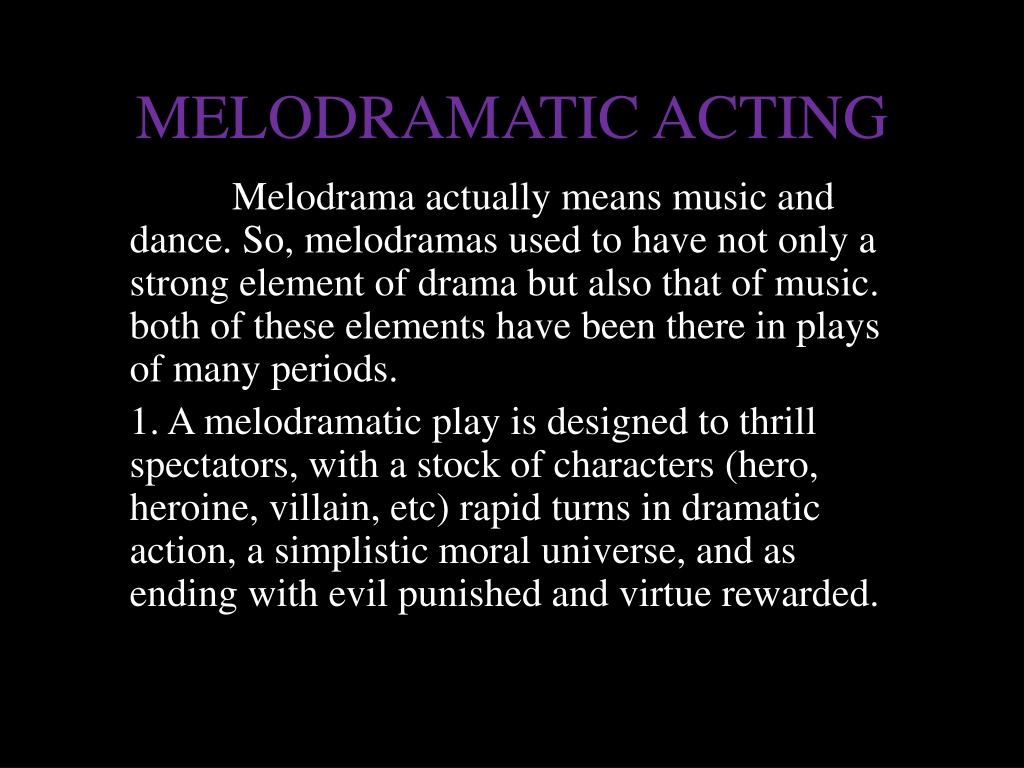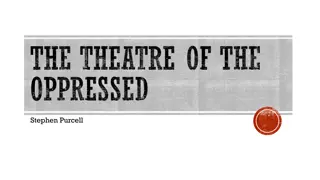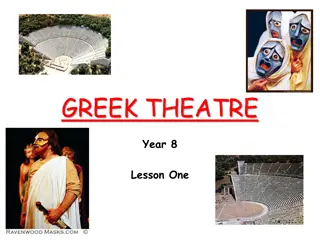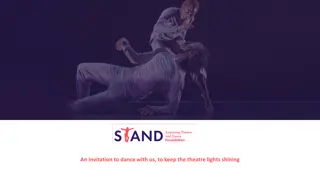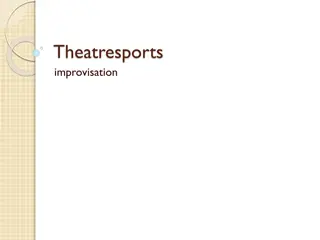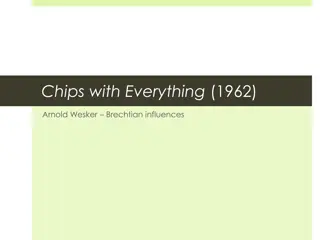Understanding Melodramatic Acting in Theatre
Melodramatic acting in theatre combines elements of drama, music, and spectacle to create thrilling performances for audiences. These plays feature stock characters, rapid dramatic action, and a simplistic moral universe where good triumphs over evil. Actors in melodramas must master melodramatic speech, music, and dance, embodying either pure goodness or complete villainy. The genre is known for its use of suspense, theatrical effects, and a focus on creating sympathy for the protagonist and antipathy towards the antagonist.
Download Presentation

Please find below an Image/Link to download the presentation.
The content on the website is provided AS IS for your information and personal use only. It may not be sold, licensed, or shared on other websites without obtaining consent from the author. Download presentation by click this link. If you encounter any issues during the download, it is possible that the publisher has removed the file from their server.
E N D
Presentation Transcript
MELODRAMATIC ACTING Melodrama actually means music and dance. So, melodramas used to have not only a strong element of drama but also that of music. both of these elements have been there in plays of many periods. 1. A melodramatic play is designed to thrill spectators, with a stock of characters (hero, heroine, villain, etc) rapid turns in dramatic action, a simplistic moral universe, and as ending with evil punished and virtue rewarded.
2. The term melodrama meant opera. 3. Melodrama is a form of dramatic compositions in prose partaking of the nature of tragedy, comedy, pantomime, and spectacle, and is intended for a popular audience. Primarily concerned with situation and plot, it calls upon mixed action extensively and employs a more or less fixed complement of stock characters.
4. Melodrama has a love for theatrical effect. It tries to play on the basic human urge like the urge to have sympathy for the good and antipathy for the evil. 5. One of the chief elements of melodrama is the spectacle, which is sought to be created not only through the instrumentality of the performers but also through scene designing like scene transfers. 6. Another element is division of the characters in to black and White . A character is either entirely good or bad. The good character has all the goodness in the world, has a high moral code and is thoroughly idealistic. The bad character has nothing to commend himself, he is blackened with a deep black brush.
7. Melodrama always ends in the victory of the good over the evil. It invariably sticks to this moral code, inspiring sympathy and cheers for the good protagonist and hatred and hoots for the bad antagonist who stands in the way of the fulfillment of the protagonist. 8. Another strong element of melodrama is supense. Suspense keeps the spectators expectantly watching the next development and hoping for the victory of the protagonist who is determined to wipe off the evil forces on his way. 9. The actor of a melodrama must learn quite a bit of music as well as dance besides learning the art of melodramatic speech.
10. The actor has to fairly well versed in the art of singing. He must not only be a specking actor but also a singing actor. 11. An actor or an actress would be even more useful to a melodrama if he or she knew how to dance. This became a qualification particularly for the actresses because the stories of melodramas required them to enact dance sequences in courts or before the nobles or even at the squares.
12. Speech was probably the most distinctive feature of melodramatic acting. 13. The speeches were elaborately written by the dramatists and intricately patterned by the actors. The writers of melodramas gave long speeches to their actors with lavish ornamentation of words, phrases, and sentences. 14. The melodramatic actors of this theater were consciously trained to build up the scenes to a climax with slowly and then rapidly rising the vocal pitch and increasing the speech flow. And the effect of building up climatic scenes was that of a volcano of passions.
15. The actor did not grow in character like the realistic theater actor grew on the stage in his character portrayal. 16. The melodramatic actors were more or less types of good and the bad men in mainly historical, romantic, and social plays. 17. Music and songs were integral part of melodramatic plays. The actor made himself more useful if he could ding solo or in duets or in chorus 18. The melodramatic theater was called Popular Theatre in the nineteenth century.
